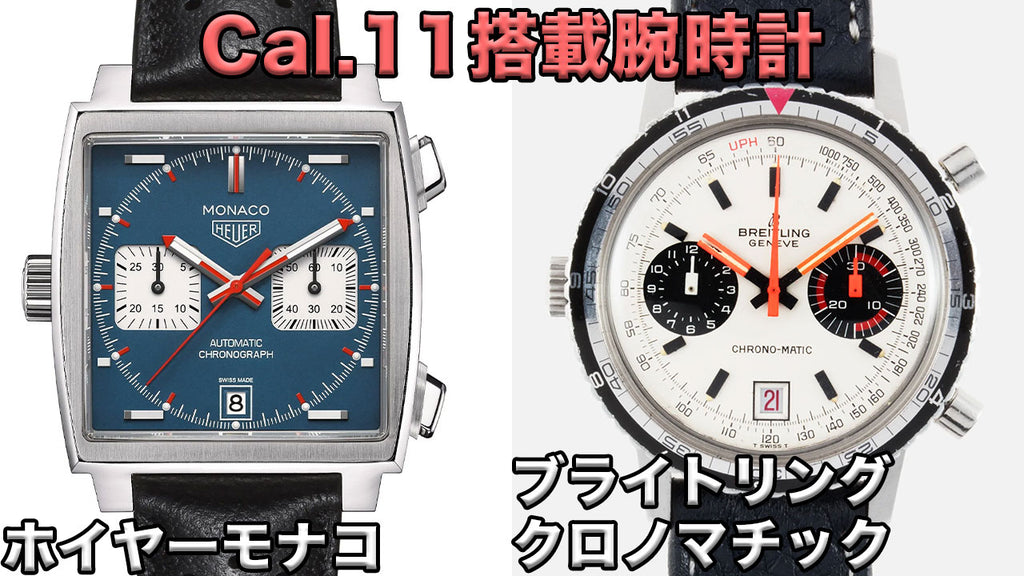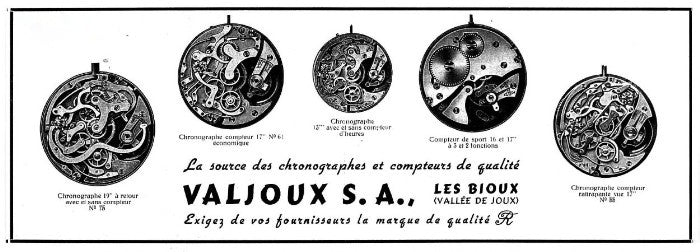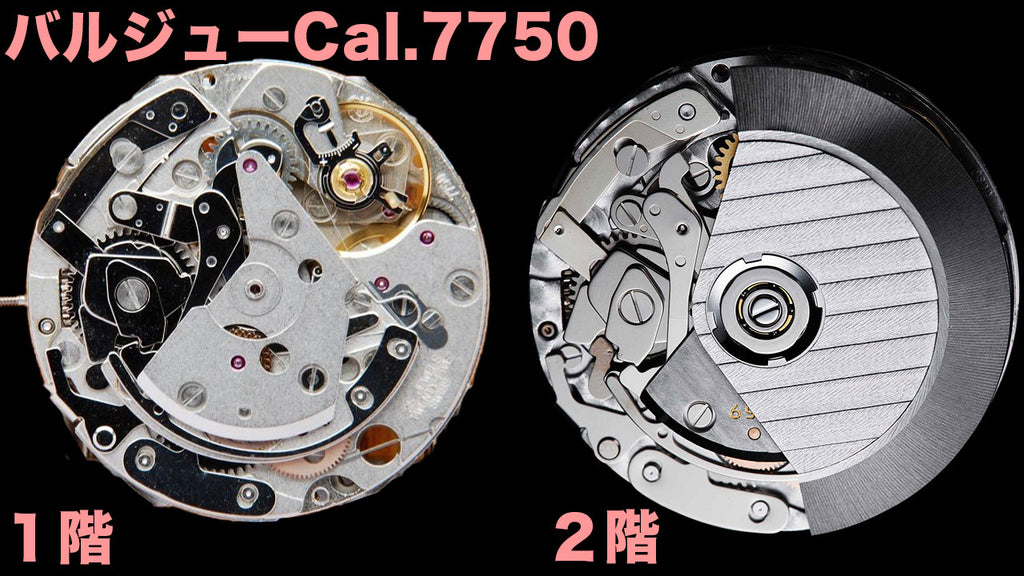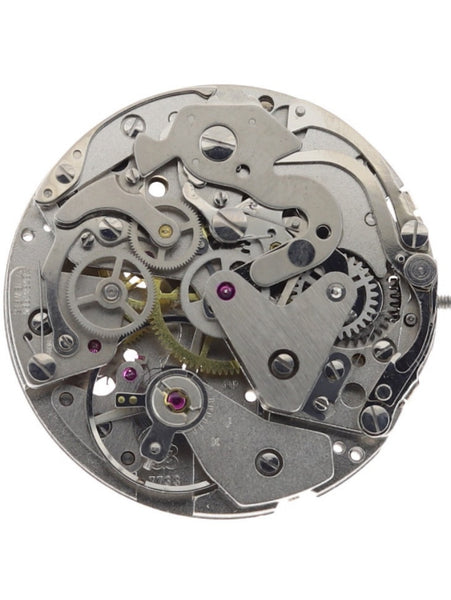What is the difference between Cal.11 and 12? How did the Cal.12 change to the Valjoux Cal.7740 and then to the Cal.7750?
Click here to watch a video on the evolution from Cal.11 (12) to Valjoux Cal.7750.
Since it's about the movement, I don't think there's any need to be too particular about it, but I still want to know what I want to know.
So, I looked into the differences between Cal.11/Cal.12/Cal.7740/Cal.7750 and their evolutionary process.
Representative watches involved include the Chronomatic adopted by the Heuer and Breitling Alliance, the NOTO army using the Valjoux Cal. 7750, and the Porsche Design Orfina Chronograph 1, so I think this will be of interest to anyone who owns any of these.
By looking at the historical background and the evolution of calibers, you can understand why this watch has this movement.
I believe that understanding this will help you to enjoy watches in a wider range, so please read to the end.
The table of contents looks like this.
1. The Birth of Cal.11
2. Relationship between Cal.12 and Valjoux Cal.7740 movements
3. From Valjoux Cal. 7740 to Cal. 7750
4. What is the Lemania Cal. 5100 that replaced the Valjoux Cal. 7750?
The Birth of Cal.11

First of all, it is commonly said that the Chronomatic Cal. 11 was developed by the Heuer and Breitling alliance.
However, Buren was also present, providing the micro-rotor technology, and Dubois-Dépraz was in charge of designing the chronograph mechanism.
We explain the role of each company in assembling a Cal.11 or 12 (and related movements) movement.

Buren supplies base movements to Heuer and Breitling
(This means giving the right to use the micro rotor.)
Heuer and Breitling will assemble the chronograph module (using components supplied by Valjoux) and combine it with the base movement to produce the Caliber 11 or 12 movement.
Dubois-Dépraz was responsible for the design of the chronograph module and the overall design of the base movement.
(Dubois-Dépraz designed the module but did not manufacture the components.)
So which company manufactured the parts for these chronograph modules? It was Valjoux.
It seems that Valjoux was not involved in the Cal.11 project as they only manufactured parts, but they still made a significant contribution.
In this way, four companies, each focused on their own area of expertise, developed a single automatic chronograph movement, and the result was Cal.11.

Cal.11 evolved into Cal.12, but they have different vibration frequencies.
The Cal. 11 has a beat rate of 19,800, while the Cal. 12 has a faster beat rate of 21,600.
There have been other small improvements as well, but they can be thought of as minor changes to the same movement type.
The relationship between Cal.12 and Valjoux Cal.7740 movements
The problem here is that the Cal.11 (Cal.12) and the Valjoux Cal.7740 are very similar.

This was in the 1970s, right in the middle of the quartz crisis.
So, even though Cal. 12 was completed, the future was uncertain, and this was a time when most Swiss companies were heavily focusing on the development of quartz.
Valjoux, who was in charge of manufacturing, was watching this from the sidelines, but they did not pursue further development and instead purchased the patent for the Cal. 12 from Dubois-Dépraz, which led to the creation of the Cal. 7740.

In fact, apart from one different component (involved in attaching the chronograph module to the base movement) and the rotor mechanism, the caliber 12 and 7740 are virtually identical.
Therefore, the surfaces of the Chronomatic Cal. 11 and the Valjoux Cal. 7740 are very similar.
In short, Cal. 7740 is a prototype.
From the Valjoux Caliber 7740 to the Caliber 7750
The problem with the Valjoux Cal. 7740 (Cal. 11) was that it derived its power from the rotation of a micro-rotor, which meant that winding was inefficient.
To improve on this, the next model, Cal. 7750, was completed in 1973.

When Valjoux started making the Cal. 7750 movement, rather than using Buren's base movement, Valjoux had their own movement, and this is the Valjoux Cal. 7733.

Therefore, the base movement is the in-house manufactured Cal. 7733, and the chronograph module is also manufactured in-house and equipped with a giant rotor.
Maybe, but what is the overall structure?
And I guess they wanted a place to connect the base movement and the chronograph module, which is an important part.
This is a design that can still be seen in watches today, and by using this large rotor, it was possible to achieve a higher winding efficiency than a micro-rotor.
However, Valjoux could not ignore the impact of the quartz crisis and, like Dubois-Dépraz, ordered designer Edmond Capt to halt development of this caliber.
Thus, the history of Cal. 7750 came to an end.
From here, let's take a look at other movements that fill the gaps left by Cal. 7750.
What is the Lemania Caliber 5100 that replaced the Valjoux Caliber 7750?
Although it is a bit off topic from the topic of evolution, I would like to share a useful story that will help you understand the historical background and the movements used in watches.
Valjoux's direction was to discontinue research and development of the Cal. 7750, but not all watch brands accepted this.
This chronograph has now become legendary, and it is the Orfina Porsche Design Chronograph 1 that we are looking at here.

Originally, this Orfina watch was equipped with the Valjoux Cal. 7750, and this was a report of the discontinuation of the Valjoux caliber while the current model was still on sale.
Generally speaking, one would think that at this point, the Orfina chronograph would have chosen to be equipped with quartz, but that was not the case.
FA Porsche, the designer of the Orfina Porsche Design, took a risk and opted not to follow the trend, instead choosing to continue with an automatic chronograph movement as its power source.
With the supply of the Valjoux Cal. 7750 movement halted, FA Porsche and Maglioli turned to another watch movement manufacturer called Lemania for supplies.


Therefore, there are two versions of the Orfina Porsche Design Chronograph 1: one equipped with the Valjoux Cal. 7750 and one equipped with the Lemania Cal. 5100.
The history of the Lemania company is explained in detail in this video:
Later, in 1984, the Valjoux Caliber 7750 was revived by being installed in Breitling's Chronomat.

Just as Zenith's Charles Vermot hid and kept the tools used to manufacture the El Primero, Edmond Capt, the designer and developer of the Cal. 7750, hid all of his production tools instead of discontinuing it, which allowed it to be revived.



